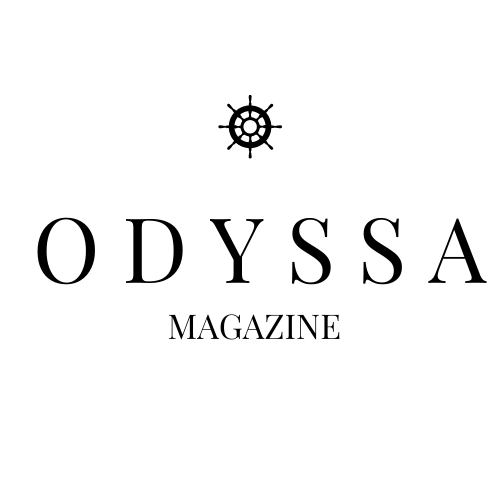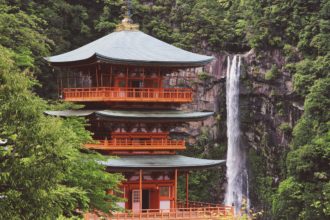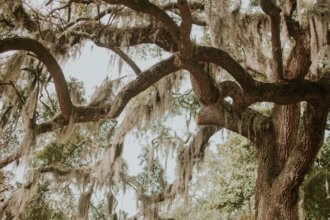Mysticism and Duality in the Peruvian Amazon
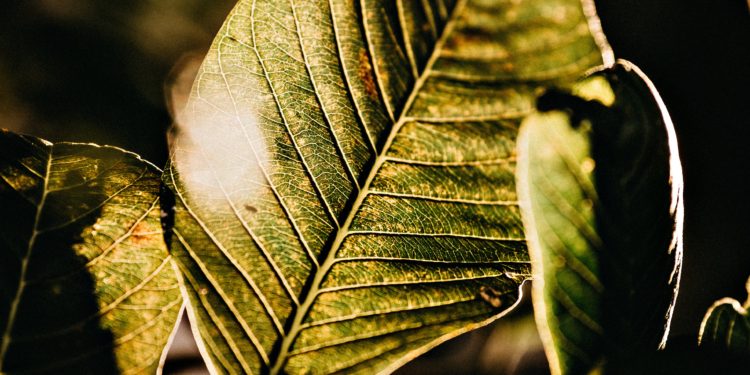
By Lindsay Valentin
I
Deep in the chest of the Amazon everything beats differently, dually. After some very hard travels, my partner and I finally landed in Iquitos. We took an off-road vehicle into the jungle to an indigenous port town called Nauta where we were loaded into a dugout canoe with a motor that took us four hours into the Amazon.
I can still remember it clearly, as if that vast and divine river were a series of roads and not a waterway. Go left out of the port of Nauta with the town on your left and the farming bank on your right. Travel until you reach the intersection of the big river. Hang a hard right and curve down into the Ucayali. Follow the snaking tributary through a series of consecutive S curves. The dolphins start to show themselves the deeper you go. As a kind of greeting, their shimmering pink backs and dorsal fins slip up above the water and then plunge back below the surface of the tobacco brown waters.
The sounds of one million strange birds begin to echo from the foliage that rises up all around you on the banks, like a wall made up of green living matter. Spotted here and there on the banks you begin to notice thatched roof huts where the tribal people of the Amazon live their lives, and with the huts always a spume of smoke from a fire lit somewhere for cooking. After some time the Rio Negro’s dark water runs alongside the tannon-stained Ucayali and you know you will be there soon. Finally a high bank slopes down into a rice paddy, and you are suddenly there, at Libertad, an indigenous town not found on the map.
Simple, right? But with every change of the season in the Amazon the waters, which operate as one, shift. In dry season the smaller tributaries close up, in wet season the farming banks opposite the villages are submerged in water and the villagers eat only fish, in midseason, you can begin to access lakes and lagoons that are inaccessible in dry, and all around you the water silently shifts and dictates all of life.
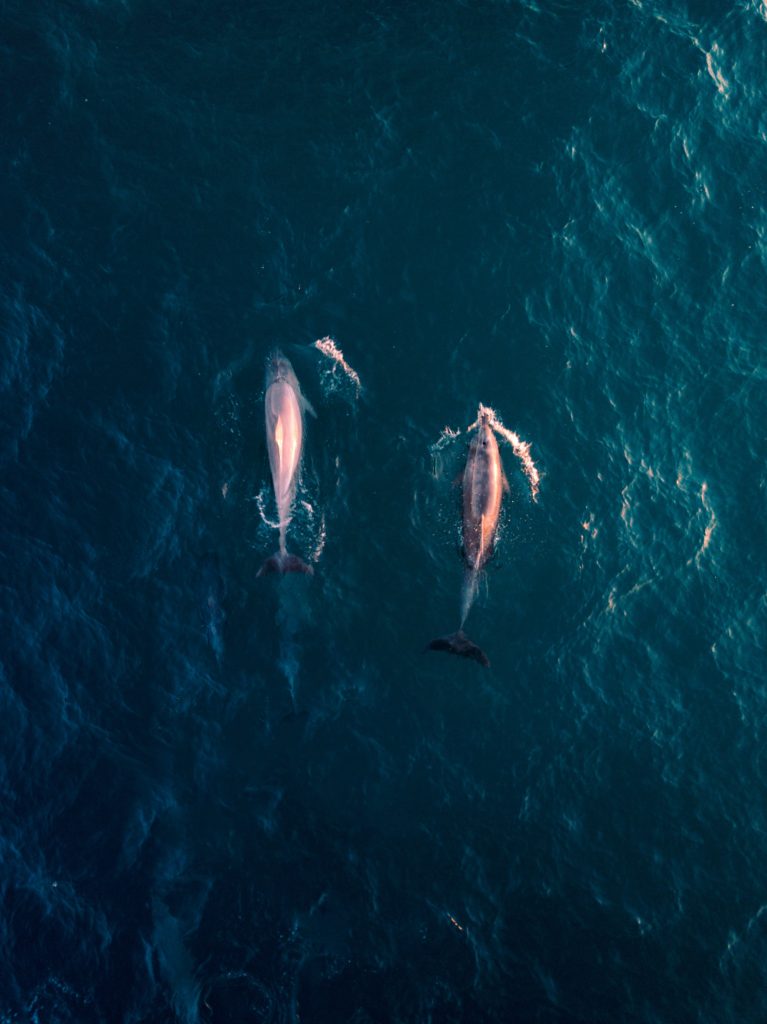
Coming off the river is a harsh slap of humidity and pure heat. The air is stagnant and filled with moisture and electricity, especially in the early hours of the day. The sun shines brightly upon everything, illuminating the sublime landscape. Brown water reaches its arms out in both directions for thousands of miles, tan thatched roofs rustle slightly in the breeze, canoes move up and down river in both directions, carrying school children coming home from classes.
We arrived to the Amazon utterly unprepared, as one cannot ever be prepared for an environment so sheerly vaporous. I remember it clearly in my mind, the way from here to there on rivers that acted like roads, but even right now, as I am typing, the river is shapeshifting. If I were to return and try to get there again on my own, instead of with a local captaining my canoe, I would surely lose my way as the river winks its eye at all those who do not truly know it.
II
We arrived into Libertad in the heat and sweat of the midday sun. We climbed up a muddy bank onto a wood plank that had been laid through the paddy fields, and headed to the cluster of thatched roof huts on the bank where we would lay our heads for the coming days. We were immediately absorbed into this tiny, primitive village in the Amazon reachable only by boat, where no currency exists or is exchanged, where there are no stores, no doctors, no electricity, no cell service.
And because you are cut off from the outside world, here you live in a dual world completely. Our boat captain had brought old newspapers from Nauta to some of the villagers because this was their way to have contact with the outside world, to find out what was going on in the city of Iquitos, a port also unreachable by road but populated, built up by rubber barons, with cement houses and electricity, the internet and newspapers, a tiny airport.
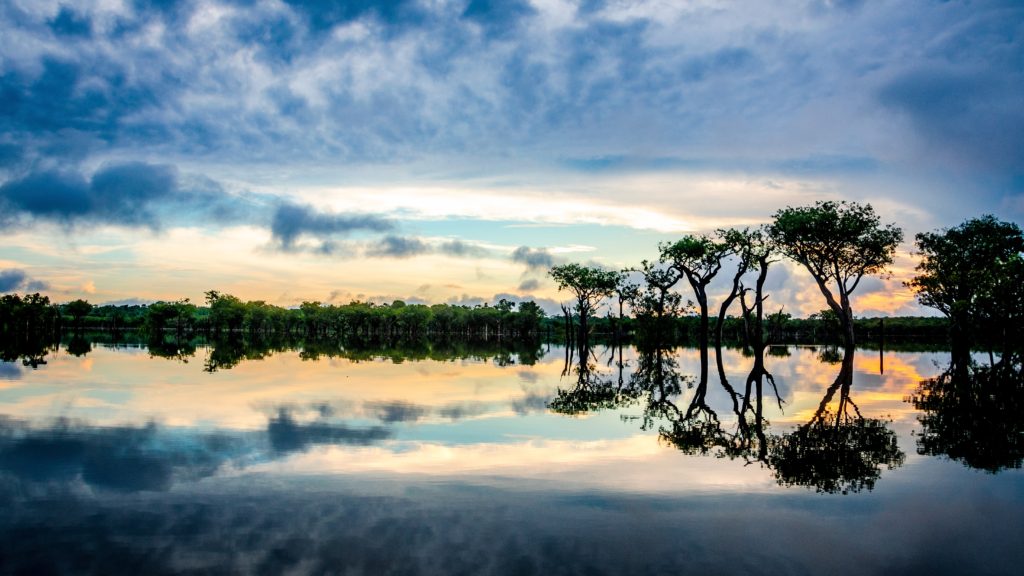
All along the way on the track to Nauta, before things got deep, we saw the tourist lodges where most people visiting the Amazon would stay, taking guided group tours on large covered tour boats and returning home to fans or air conditioning and trial size shampoos.
Visiting Libertad in a community development initiative is to live in the center of the Amazon among the people, to hike next to them, eat their food cooked over a wood fire, to learn about their real lives and the plants and creatures that accompany their days, to make crafts with them, and to laugh with when some enormous tarantula casually climbs above your head during dinner, scaring the shit out of you.
I remember the pain and uncomfortableness of hiking through the epic jungle for eight hours a day in long sleeves and pants in 95 degree heat, the jungle having to be hacked away by a machete so you could move even a foot; but also remember even more strongly the experience of wild monkeys climbing on my shoulders to take pieces of my afternoon orange to eat, of swinging on a Tarzan vine, of finding red palm root that is a natural way the indigenous treat malaria. May, the local assigned to work with us in the jungle collecting fauna and identifying animal habits, cut some palm root for himself that he wrapped up in palm leaf like a package to take home to his mother who had contracted malaria.
At Libertad, you sleep in thatched roof huts the villagers make of wood cut from the jungle, fashioned the same way their own homes are, or you camp with your assigned villager in el bosque, the jungle. They know, however, the ultimate dangers of malaria, and so whether sleeping in a hut or in the jungle, a very effective mosquito net is provided to sleep within. The villagers themselves do not use these, they sleep in hammocks in the open air or in the jungle on the ground. They use the plants around them, like palm root and cinchona, to treat mosquito born disease.
To those within the Amazon, the threat of malaria in this environment is very real. There were points, especially when hiking through more swampy areas at night, that I felt the insects feasting on my neck and face, and felt the jungle creeping in close around me.
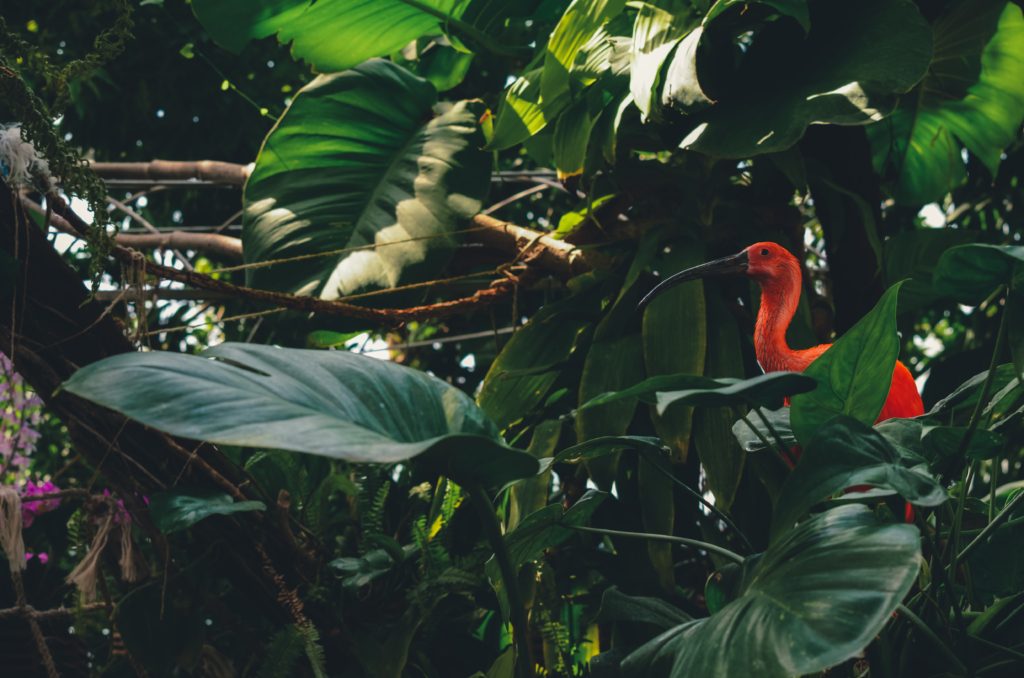
May would tell us stories from his people, bits of indigenous folklore, and in many of them the jungle was alive and like a mythic creature would change shape, luring you this way or that with signs and symbols that told you that this was the way back, was the way home, but then closing in around you, causing you to lose your way and then laughing at you.
There is a bird in the Amazon whose call sounds like laughter and we heard it often while trekking, making it easy to believe that the jungle itself was laughing at you, leading you into itself in a maze of endless, entrenching vines, high grasses, thorns and fauna, leaving you off in less dense expanses ruled by huge ficus trees in whose intricate and enormous roots you were dwarfed.
I once asked May how he knew where he was in the thickness of the foliage. You could not see another person right in front of you at times, and you had to be extremely careful where you put your hands. Fire ants climbed along branches, what looked like a stick to steady yourself with could be filled with razor sharp thorns that would tear open your palms, and snakes crept behind leaves on branches along with poisonous spiders and stinging nettles. The ground was covered over in creepers and vines that hid fallen sticks and root systems easy to trip over, and falling meant the possibility of landing on something sharp, something poisonous, or something alive.
May simply laughed at me when I asked this. He was from much deeper in the jungle than Libertad. He knew the terrain as though it were inside him and not out, like his veins shifted with its shifting waterways, and he at every single moment knew, surely and without question, exactly where he was and how to get back to our waiting canoe on the river. There were many points where he would take off his shoes and run up trees to gather fauna to identify, and if accompanied by our boat captain they would both do so and then call to each other in their tribal mother language, and then call to the animals in their sounds, at times sounding more like the creatures than like us.
They seemed to speak the language of the animals and birds that had filled their days since they were born, calling into the winds in the same way the birds did, puffing like the pink dolphins on the river. At one point May awoke a sloth by making a call like that of a giant bird that is its predator, and the sloth awoke and May brought her down and put her in my arms and explained how to differentiate males from females by the patch found on their backs, and about the moth that symbiotically cleans their fur.
There was at all times this strange marriage of harmony and danger, and so when you slid down the muddy riverbank and ate shit, or fell and busted your knee on the boat, you laughed it off and kept moving through the gossamer days that stretched before you like ever unfurling tendrils of jungle time.
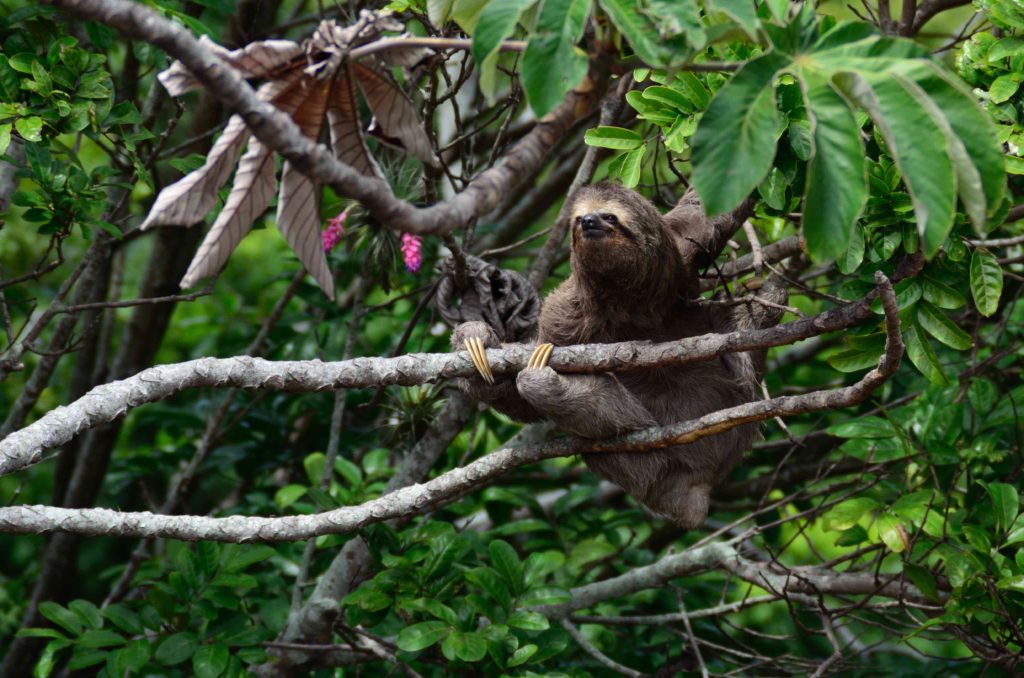
We went to sleep, often exhausted at 8 pm. We rose at five with the sun and heat and birds. Every afternoon after lunch, the sky filled with clouds and energy from the combustive heat and then burst into a symphony of thunder and rain. Expressive lightning displays crackled over the river, cooling down the lands for a brief moment in the afternoon.
Children played soccer in a large field that May said they used as a swimming pit in high water season, but where the anacondas and other snakes also loved to swim. Women hung clothing out to dry. We reveled in the drop in temperature that meant a brief reprieve from the oppressive heat that returned in the late afternoon and made it hard to get to sleep in the evening.
One most memorable day we made crafts with a local artisan woman in the village. She showed us how to weave jute fibers she had dyed, using berries and other plants, into beautiful bowls and baskets, her craftsmanship skilled and faultless. A few times a month one of the villagers took a canoe to Nauta to sell them at the market. We laughed with her as our clumsy fingers created crooked baskets and bowls with gaping holes.
Her children played on the floor of the hut, and horse flies bit our toes. Someone emptied their bathroom bowls off the back edge of the open ledge of the hut, tossing their contents out into the jungle. Villagers laughed and children played in the fields outside, and Miara threaded our needles with jute again and smiled at us, the corners of her eyes crinkling. We shared a coconut we broke into pieces in its shell, and drank pink camu camu juice.
Later in the heat of the day we jumped off the canoe and took a swim in the river under a double rainbow with pink dolphins puffing all around us. We napped in a hammock that afternoon, and in the evening hiked for a mile through the high paddy fields to an area that opened from a thin, serpentine channel into a lagoon. The sun was starting to set and surrealist strokes of pink and gold and purple-grey streaked the sky, reflected back in the mirror of the lagoon.
On top of the lagoon sat enormous green lily pads, so gigantic I could have laid on one of them and used it as a raft. Their stamens opened up into large white or deep lotus pink flowers. These are flowers who are first male when white, and then shift gender to become female and turn pink. It is a magnificent sight and I was fascinated, staring at the complexity of those enormous water plants. May took our photograph in front of these alluring lilies, found only in the Amazon, but then he said we had to go.
This heavenly landscape by day at night turned into a swamp filled with caiman and poisonous snakes that emerged en masse after sundown and the sky was already turning indigo.
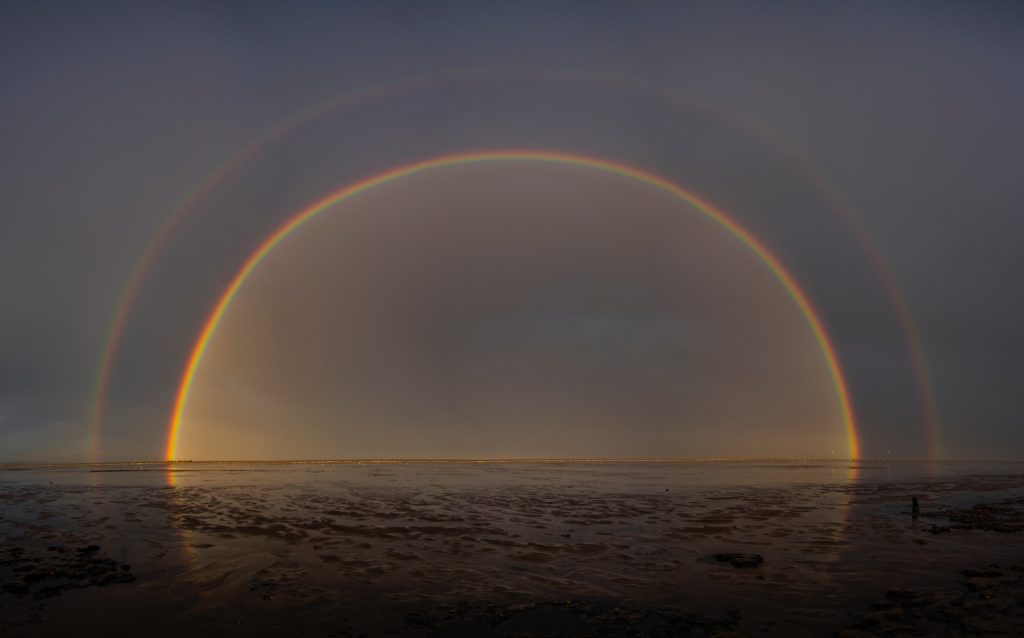
When dark falls in the Amazon, you can hear every single thing alive around you. The jungle breathes out back of the huts of Libertad, and the villagers take the last waning light of the day to go down to the river and wash clothes and pans from dinner, or to bathe themselves. Often we would be heading out at night in a canoe to do some research and would find children washing in the narrow tributaries of the river that were beginning to open up as we were moving from midseason to high water.
These narrow offshoots were covered in water lettuce, sometimes so thick that it provided a carpet upon which herons and other birds could walk upon the water. Hairy vines hung down from the heavy foliage on the banks, and these areas were rife with amphibians and snakes, opening up into lagoons upon whose edges reeds grew and we identified caiman migrations.
As you paddle down one of these tributaries to reach lagoons only accessible in mid or high water, the jungle appears at night as one giant, solid black mass fronting you on either side. You slide through the water in a canoe, and the black mass begins to light up all around you, as though you were looking at the sky on a crystal clear evening and the lights of the Milky Way and all its billions of stars were refracted back in mirrors, sparkling all around you. On the water lettuce, the glow worms had laid their eggs and these too glowed and glistened in the moonlight, and the earth had become the heavens, the heavens reflected exactly upon this earth.
This is the mysticism and duality of the Peruvian Amazon. Living can feel like a sure death, life can reflect back from the heavens, what is solid is not absolute, and what your eyes see is not always what is. You can live in this world, and be of another world entirely.
Lindsay Valentin is a global writer and print artist who holds a Master’s Degree in Writing from Otis Los Angeles. She has traveled extensively internationally and written about art, travel, culture and the LGBTQ community for a variety of print and online media including Pink Pangea, goabroad.com, GO NYC Magazine and BUST Magazine. You can view more of her work at www.imprintedink.com and read her upcoming travelogue collaboration at www.theroguesouls.com.
Want to read more about the role travel plays in our beliefs?
Watch “I Have a Small Heart.”
Do you like travel stories set in South America?
